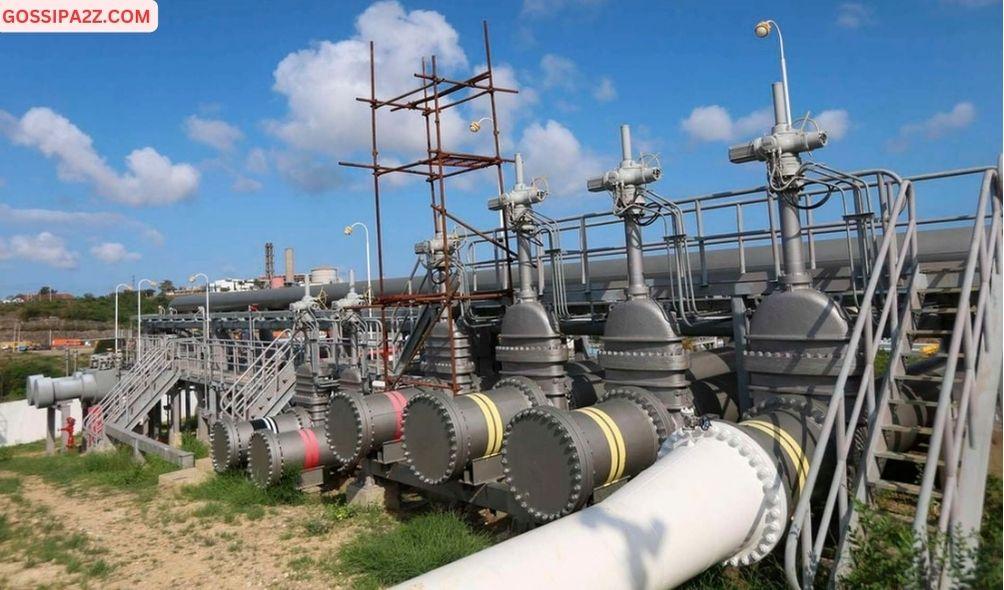Kenya Oil Facilities Face Huge Losses As Uganda Shifts To Tanzania
Kenya has lost $200 million worth of exports to Uganda, its largest regional market, since October 2023, new data shows.
Experts caution that it is expected to incur additional losses in the future as the conflict over the importation of petroleum products intensifies, posing a potential threat of underutilization to significant oil infrastructure.
The previous week, Uganda declared its shift to Tanzania for oil imports due to a lack of progress in registering its national oil marketer, Uganda National Oil Company (UNOC), in Kenya. This registration was sought to streamline imports through the Mombasa port.
Uganda’s Minister of Energy, Ruth Nankabirwa, expressed on Tuesday in Kampala that the ongoing obstruction by Kenya regarding the Unoc agreement poses a risk to the stability of Uganda’s fuel supply.
“You can’t sit there and be at the mercy of one person. So far, I have met the President of Tanzania. My president sent me as an envoy and we are in discussions,” she said.
“So, we know that the alternative route could be expensive because of the logistics that are involved but we also know that there is a possibility of a negotiation with the government of Tanzania, to waive some taxes so that their sister country can be able to do business.”
According to the Daily Monitor, Ms. Nankabirwa said Kenya’s President William Ruto had on several occasions shown positivity towards Uganda’s move, “but I don’t know where all this frustration is coming from”.
“The president sent me to meet President Ruto four times and he was so supportive on all the times then he sent me, my brother Chirchir [Davis], the Minister of Energy, and some [Kenyan] people jumped in court, what do you do if you are sued? You wait for the ruling. So we have been talking and we are continuing to talk but now, we have a time frame because we feel the pump price in Uganda should be lower,” she said.
If this ruling remains unchanged, it poses a risk to Kenya’s $385 million investment in the Kipevu Oil Terminal 2 (KOT2) in Mombasa, inaugurated last year, as well as the $170 million fuel jetty in Kisumu.
The Kenyan government has established the necessary infrastructure to increase the capacity to manage transit petroleum products for Uganda, Rwanda, and Burundi, intending to double the current handling capacity from 35,000 tonnes.
The KOT2 can manage up to four vessels simultaneously, whereas the previous terminal can only accommodate one vessel at a time.
The latest terminal was created to enhance the management of petroleum products and to entice increased business from neighboring countries to rival Dar es Salaam.
The terminal is anticipated to lower the expenses of petroleum products by minimizing demurrage costs, which represent the additional time required for loading and unloading cargo. This is a significant contributor to the elevated cost of oil in the area.
ALSO READ:
- Kenya Owes Chebukati a Hero’s Farewell for ‘Saving’ Democracy – MP Declares
- HELLFIRE HORROR: Worshippers in Bomet Torch Granny Alive in ‘Satanic Purge’ Ritual(Video)
- Haitian Police Caught in Explosive Feud with Kenyan Peacekeepers? Officials Scramble to Deny Rift
- Raila Odinga’s 2027 Options After Shocking AUC Defeat
- Congo Frees Opposition Leader and Former President’s Ally Jean-Marc Kabund
In Kisumu, the 95-meter oil-loading pier, belonging to the Kenya Pipeline Company, finished construction in February 2018 but was not operational until January 2023. The delay was caused by the need to finish constructing a related facility in Uganda.
The five-year anticipation concluded on January 3, 2023, with the arrival of the initial shipment of petroleum products at the Mahathi jetty through the MV Kabaka Mutebi II.
Mahathi Infra (Uganda) Ltd reached an agreement with TotalEnergies and 19 additional oil-marketing firms to utilize the Kisumu facility and its counterpart in Uganda. The project, partially financed by Equity Bank, involves the collaboration of these entities.
However, Kampala halted its agreement with Kenya, asserting that it received an unfavorable outcome since the implementation of the government-to-government (G2G) fuel importation deal with the Gulf states.
Kenya’s primary destination for exported oil products such as super petrol, diesel, kerosene, and Jet A-1 aviation fuel is Uganda. Approximately 900 million liters of petroleum products are imported by Uganda from Kenya every month.
Currently, the focus is on utilizing a refinery with a capacity of 60,000 barrels per day to process a portion of its crude oil domestically. This initiative aims to enhance employment opportunities, take advantage of technology transfer, and capitalize on the expertise. According to Energy Minister Ruth Nankabirwa, the selected entity for constructing the $4 billion facility is the Dubai-based firm Alpha MBM Investments Llc.
Uganda has granted a license to the China National Offshore Oil Corporation for the production of liquefied petroleum gas at a facility to be built within the Kingfisher development zone under its operation.
Kingfisher represents one of Uganda’s two commercial oil development fields, with the other being Tilenga, managed by TotalEnergies.
Kenya Oil Facilities Face Huge Losses As Uganda Shifts To Tanzania
